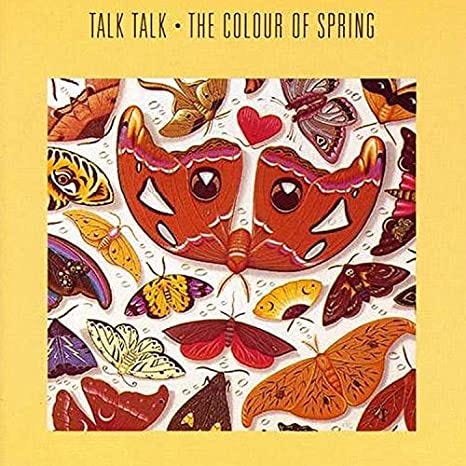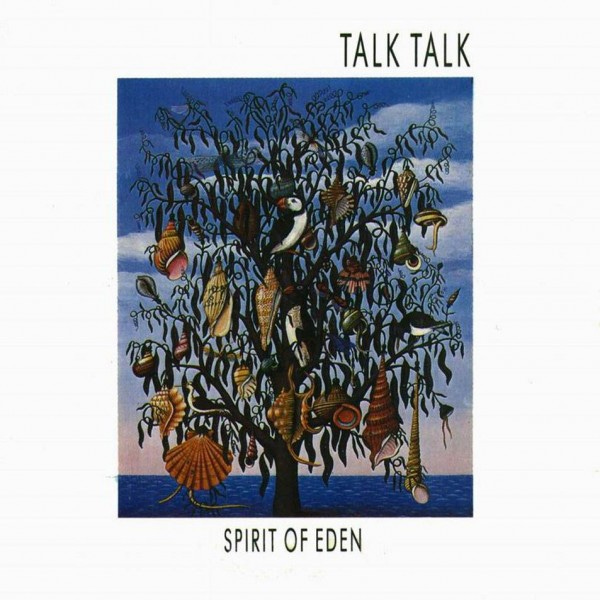“Life’s What You Make It” by TALK TALK
Miscast New Romantics, a music equivalent of the moon landings, and the brilliantly off-kilter pop song in between.
Beauty is naked
Before there was Talk Talk’s “Talk Talk,” there was “Talk Talk Talk Talk” by The Reaction. The 1980 song’s rough sound and urgent tempo echoed the punk explosion from a few years before. It was just a demo, but the song made it onto the compilation album Streets (“Select highlights from independent British labels,” released by the record store chain and fledgling label Beggars Banquet) alongside The Members, Slaughter and the Dogs, and poet John Cooper Clarke. From there, it's a familiar story: The main talent from The Reaction, Mark Hollis, formed a more capable band and got signed to a big label, which in turn molded the band, now called Talk Talk, into a pop product. But the story has a twist: After this initial compromise, Hollis led the steady evolution of his band’s music, which not only produced their biggest commercial success, but went on to change the idea of what a band like theirs could achieve.
Hollis wrote “Talk Talk Talk Talk” with his older brother Ed, who was managing pub rock band Eddie & the Hot Rods. While The Reaction was grouped with punk bands, Hollis’s influences ran more to the American garage rock that had been collected on the Nuggets compilations. The inspiring thing about punk, Hollis said, "I didn't think I could play, but punk said, 'If you think you can play, you can play.’” Talk Talk were signed to EMI, Duran Duran’s label, opened for Duran Duran, and recorded with Duran Duran’s producer Colin Thurston, all of which slotted their 1982 debut The Party’s Over into the synth-driven New Romantic trend, which was popular at the time, but would leave few survivors. Hollis, for one, was glad to see it go. When the band’s keyboardist Simon Brenner quit, he was never replaced.
The re-recorded “Talk Talk,” its lyrics changed to be more interpersonal than socio-political, grazed the UK Top 20 and its video was an MTV hit Stateside. Their follow-up album It’s My Life had a solid single in its title track (later to be faithfully covered by No Doubt for one of their biggest hits) and while synth-driven, sounds more Roxy Music than a Duran Duran also-ran. Still, Hollis’s discontent is visible in the music video. His lip-synching was so desultory that his mouth was animated over, a move to save the video that makes the lyric “it’s my life/don’t you forget” seem awfully ironic.
“Life’s What You Make It” is blissfully synth free. Colour of Spring, the title itself a symbol of rebirth, has more in common with the previous two records than just Hollis’ yearning vocals; it sounds more like a proper evolution than a departure. Big choruses still rise up from big washes of sound, only here, they’re created by nervy strings, shimmering guitar, atmospheric Hammond organ played by Steve Winwood, and on two tracks, even synthesizers. By this time, producer Tim Friese-Greene was Hollis’s writing partner and an unofficial fourth member of the band. The partnership realizes Hollis’s ambition to be, well, ambitious — creating on that knife edge between what you can do with music and what you can’t, hewing to that original punk inspiration of playing because you maybe only think you can. Colour of Spring would be Talk Talk’s biggest-selling album.
“Life’s What You Make It” was the last song to be written for Colour of Spring after months of 12-hour days in the studio. It went Top 20 UK and was a hit internationally, but it’s a weirdo of a pop song. The sound is very much Big ‘80s; it’s how it gets that that’s a bit odd. A rolling piano bass line is joined by a clattering drum beat that tumbles as if down a small set of stairs. The hook is how this all rhythmically comes together — it’s like the brief weightless sensation while riding in a boat as it crests wave after wave.
Baby, life's what you make it
Celebrate it
Anticipate it
Yesterday's faded
Nothing can change it
Life's what you make it
Dueling with Peter Gabriel sideman’s Ghost-of-Christmas-Future guitar solos, Hollis’s vocal can sound like he’s struggling — to be heard, to be understood, to restrain himself from passion. It’s what makes his voice so compellingly human. Belting these ostensibly positive lyrics, it’s the emotional equivalent of a jazz blue note — a minor interval where you expect a major. This makes the intent of the lyrics less easy to know, which is perhaps the point — the song, too, is what you make it.
Near the end of Colour of Spring is “Chameleon Day,” a song that first indicates Talk Talk’s permanent move toward the stillnesses of Miles Davis-Gil Evans collaborations like Sketches of Spain. 1988’s Spirit of Eden is a landmark in this regard. It’s both quiet and gorgeously discordant, a manifestation of the “beauty is naked” lyric from “Life’s What You Make It.” The band recorded hours of improvised performances, mostly in the dark. The rumor is that when an EMI representative first heard it, he left in tears, either from its beauty or its sure failure to sell. The record was indeed a commercial disappointment. It also made a profound impact on those musicians who heard it. The record’s focus on texture and space over verse-chorus song structure all but created the post-rock genre. It’s impossible to imagine Radiohead’s evolution from “Creep” to OK Computer without it. Upon Hollis’s passing in 2019 at age 64, St. Vincent said, “Spirit of Eden really saved my life.” Her apparently not hyperbolic praise was hardly alone.
This is perhaps what Hollis was always pushing himself toward, music worthy of changing a life. Talk Talk’s last album, 1991’s Laughingstock, went even further. The band (at this point just Hollis and drummer Lee Harris, plus Friese-Greene) played with an estimated 50 musicians over months of arduous sessions; after all the editing and overdubs, only 18 made the final recording. The resulting album is emotional and vivid, atmospheric but demanding attention like a sunset over a landscape you’ll never visit again. Like the record before it, it’s a captivating piece of art.
All this came from punk’s promise that you could make music even if all you had was the idea that you could. Hollis would otherwise have never started a band. As Elbow’s Guy Garvey said of him, “To go from only having the urge, to writing some of the most timeless, intricate, and original music ever is as impressive as the moon landings.”
11 Song Playlist
“Life’s What You Make It” and ten more songs from Talk Talk and Mark Hollis. I wish the song by The Reaction was available for streaming.
R&B Beatles
What’s your favorite R&B cover of a Beatles song? I had the idea to make a Thanksgiving playlist of all soulful covers of Beatles songs, which like my kitchen, is currently unfinished. Please respond in comments. I’ll share a mix next week.
Thank You
Thanks for reading. I was asked this week why I do this, and my answer was to make something people would share. The new subscribers that come from your shares this really do mean a lot.




Hi Scott, “New Grass” from Laughing Stock remains one of the most beautiful, hypnotic pieces of music, just exquisite. “Norwegian Wood” covered by Sergio Mendez and Brazil 66 is a lovely version. Happy Thanksgiving! Tim.